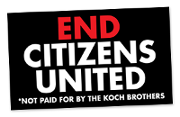Biblio
(1991). The Corporate Negaholic: How to Deal Successfully With Negative Colleagues, Managers and Corporations.
"The alternative action was to look at the inequities and the resentments and find solutions which would create a win-win outcome. Unless everyone wins, no one really wins." (p. 91)
(1991). Deming management at work.
"In the words of W. Edwards Deming, 'The aim of leadership should be to improve the performance of man and machine, to improve quality, to increase output, and simultaneously to bring pride of workmanship to people. Put in a negative way, the aim of leadership is not merely to find and record failures of men, but to remove the causes of failure: to help people do a better job with less effort.' " (p. 236)
(1991). Developing and Training Human Resources in Organizations (2nd Edition).
"Despite its wide use, punishment can have unfortunate side effects. First, there is a high probability that the response will be reduced only when the punishment agent is present....Second, punishment may result in avoidance, hostility, or even counteragression toward the punishing agent." (p. 235)
(1991). Dr. Deming: The American Who Taught the Japanese About Quality.
"Some writers call for greater accountability. The computer is seen as the sure way out of our problems by providing management with intricate details about each person's performance. All these views are wrong!" (p. 93)
(1991). Driving Fear Out of the Workplace: How to Overcome the Invisible Barriers to Quality, Productivity, and Innovation.
"W. Edwards Deming tells those who attend his seminars, 'We are here to make another kind of world.' He expresses the broad scope of the goal, and its enormity....
To achieve another kind of world requires a deep understanding of where we are now. The awareness of fear can help us move to this point. In the same way that many organizations have had to face harsh news about waste, scrap, and rework within their production processes, there is also harsh news about fear in human interactions in the workplace. But once past the denial that is so common, the real possibilities begin to emerge. When managers accept the role of facilitator, coach, and consultant, a dramatic shift takes place. Traditional notions of controlling and telling give way to inviting and guiding. Commitment switches to the long term—to the development of quality products and services, to long-lasting, mutually satisfying relationships with customers, vendors, and employees." (p. 240)
To achieve another kind of world requires a deep understanding of where we are now. The awareness of fear can help us move to this point. In the same way that many organizations have had to face harsh news about waste, scrap, and rework within their production processes, there is also harsh news about fear in human interactions in the workplace. But once past the denial that is so common, the real possibilities begin to emerge. When managers accept the role of facilitator, coach, and consultant, a dramatic shift takes place. Traditional notions of controlling and telling give way to inviting and guiding. Commitment switches to the long term—to the development of quality products and services, to long-lasting, mutually satisfying relationships with customers, vendors, and employees." (p. 240)
(1991). The Emperor's New Mind.
(1991). How to Lead Work Teams: Facilitation Skills.
"Leaders will do well to think of a team as a collection of diverse individuals, each with his or her own unique character and potential for contribution to the group. Being expected to conform and to subjugate individual needs and desires for the common good is degrading to team members. The fact is that some people are more comfortable as part of a group than others. Some more independent members may feel constrained and ill at ease working in a team. Others, because of their race, sex, age, religion, or culture, may not have much in common with other members and yet feel pressured to get along and conform. An effective leader is sensitive to the need to preserve individual dignity, to capitalize on differences, and to not try to achieve conformity."
(1991). Organizations on the Couch: Clinical Perspectives on Organizational Behavior and Change.
"The institutionalized work group accomplishes work in a routine and rational fashion. Procedure, rules, and regulations may take priority over quality of work, substance of product and service, and overall meaning and purpose of task accomplishment. Intra- and interorganizational boundaries are often rigid and inflexible. Bureaucratic administration replaces leadership." (p. 204)
(1991). Primer of Biostatistics.
(1991). Statistics for Business & Economics.
(1992). Troubleshooting TCP/IP.
(1992). Windows Magic Tricks.
(1992). Abuse in the Workplace: Management Remedies and Bottom Line Impact.
"Certain conditions are necessary for creativity to flourish, one of which is the time to play with ideas while in an open mode of thinking: relaxed, expansive, less purposeful, more contemplative (Cleese 1991). Organizationally, this translates into administrative slack. Peter Drucker relates a company's ability to innovate to the amount of administrative slack it provides in its daily operations ('Creativity in Danger' 1991)." (p. 149)
(C)2014 CC-BY-NC 3.0, workcreatively.org











 ]
]